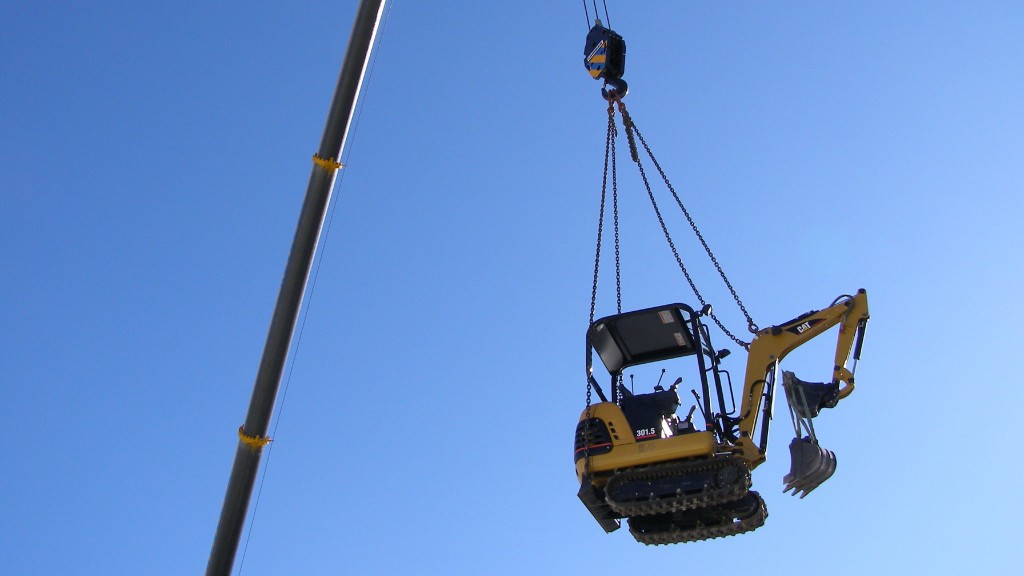Tips for construction firms to shore up security and protect against equipment theft
Don't let your gear get lifted - take some common sense steps to keep it on the job

The coronavirus pandemic created something of an open season for construction site theft as job sites across the country either shut down or saw work curtailed as the nation attempted to isolate and curtail the spread.
Circumstances aggravated a persistent and costly problem for the industry, which reports some 600 to 1,200 cases of equipment theft annually, costing it an average of $400 million.
The issue is a lot bigger than the replacement value of the stolen equipment. The indirect costs can be significant, stemming from job delays and penalties and downtime for operators, higher insurance premiums and sometimes its cancellation. Some estimates suggest that the direct and indirect costs of thievery at residential construction sites can add 1 to 2 percent to the price of a new house.
Low and high tech solutions effective
This makes preventative security measures at job sites and of the equipment within them instrumental to protecting this substantial investment. Both low and high tech solutions are effective, especially used in combination. Here are four measures that will make a difference.
Layered security solutions make better barriers
The harder criminals have to work to penetrate security defenses the more likely they will be to give up. Fences are a must, kept locked, and with features making them resistant to climbing. They don't have to be sophisticated: securing sheets of plywood to a cyclone fence is an effective deterrent. Making the point: warning signs strategically located on the fence. These can tout 24-hour video surveillance, penalties for trespassing and/or rewards offered to those who report thieves. Access points should be limited and monitored, whether with technology or on-site guards (especially valuable despite the cost in high crime areas). Adequate lighting is another must-have - even better when used with motion detection monitors and alarms.
Identify everything and keep a list
All equipment and its attachments - from heavy machinery to hand tools - should be marked with the company name in a way that can't be easily removed or obliterated. Using welding or etching tools will do the best job. Much of this equipment doesn't have title and registration information, making this crucial for identifying and reclaiming property that's stolen. Also important is maintaining an inventory of all equipment on the site and where it's located. This is an efficient way to stay on top of thievery and facilitate recovery. As an additional way to keep tools and equipment labeled, consider microdot technology. Microdots are tiny labels that are invisible to the naked eye, but that show up under a black light or magnification.
Tech solutions give a leg up against criminals
One way to marry the security benefits of lighting, monitors and alarms is through Internet of Things (IoT) solutions - especially helpful at big job sites with a large amount of tools and equipment to protect. By using IoT-enabled tags that are equipped with sensors, the location of equipment can be monitored in real time. In fact, using IoT sensors at strategic locations throughout a job site can help detect equipment movement and other risks, too, like fire and flooding.
Ensure you've got all your equipment protected with a GPS, and not just the biggest items. GPS trackers can be smaller than a cell phone, and installed on items like generators, welders, light pods, and trailers. We've seen cases where a schedule of equipment was stolen, and the GPS on a small piece of equipment was what led police to the storage location.
Newer, factory-installed GPS units are integrated into the control circuitry and aftermarket options like smaller battery-operated GPS units can be easily hidden. Many manufacturers are now providing integrated GPS systems that monitor and link operations to increase efficiencies. The battery-powered units have a five-year-plus battery life and can be attached magnetically in hidden locations.
Another technological solution is motion sensing cameras; inexpensive systems with flexible power solutions, from hardwired to solar power options and reliant on a cell phone signal versus wi-fi. Motion detection signals an alert to a mobile device, but some vendors offer 24/7 monitoring. A few well-placed cameras can cover an entire job site, or a subdivision for residential builders.
Make it hard to walk or drive off with equipment
The most commonly stolen equipment from construction sites includes power tools, anything that will fit into a pickup truck, and equipment that can be easily trailered. Factory and dealer-installed security options like hydraulic locks and hidden disconnects do provide a lot of value. Other portable equipment like generators and welders should be locked in a trailer, chained up inside an encapsulated building, or at the very least, chained up in an out-of-sight area and positioned in a way that makes them difficult to transport.
It shouldn't be necessary to mention, but sometimes the most effective security for construction equipment doesn't require an expensive and sophisticated technological network. Reinforcing the need to use a little basic common sense can go a long way. That means not overlooking a no-key-left-behind policy, to ensure keys are not stored on the machinery, and a purchasing policy that ensures all equipment is individually keyed.
Phil Casto is Senior Vice President for Risk Services at HUB International.


